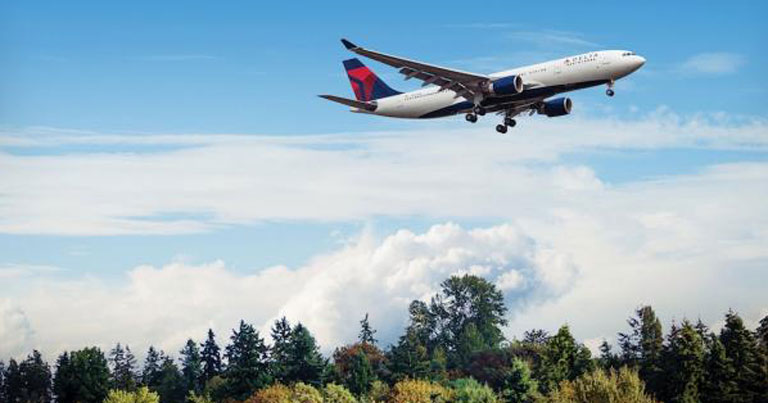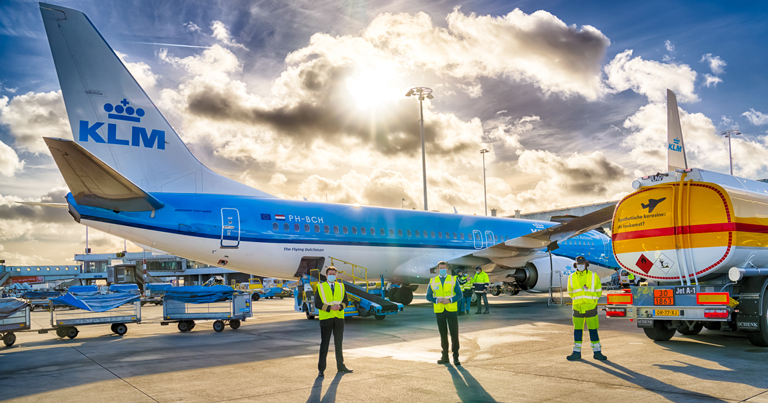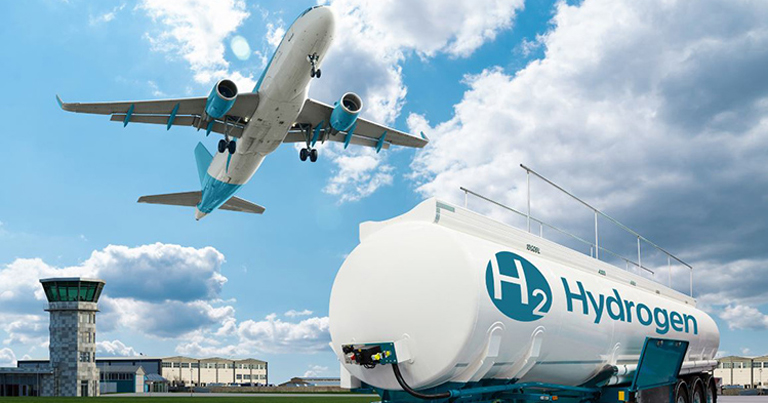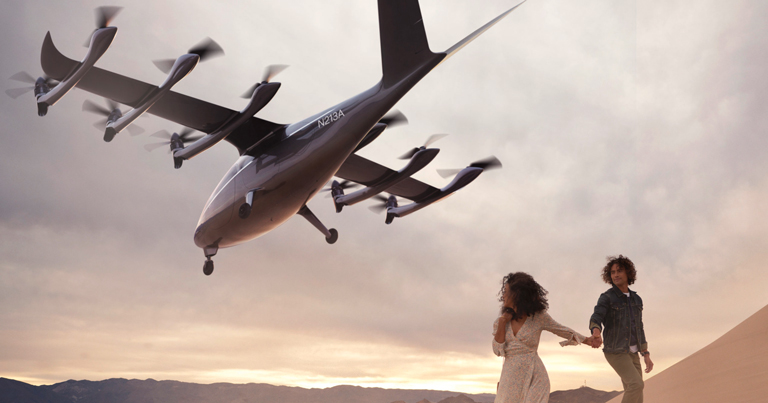The COVID-19 crisis has had a detrimental impact on the air transport industry, but it is also offering an opportunity for airlines and airports to rethink their strategies and restart operations in a way that shapes a greener and more resilient future.
Despite the crisis, many airlines and airports have put investment in sustainability on top of their agendas, as FTE highlighted in our trends feature in the beginning of the year. So, let’s take a look at some of the recent initiatives that the industry has undertaken to drive these efforts:
Airline bailouts – a missed opportunity to tackle climate crisis

The global airline industry is under an extreme financial pressure with the International Air Transport Association (IATA) forecasting a total net loss of $118.5 billion for 2020. COVID-19 relief packages have been a vital lifeline for airlines around the world with government financial aid to airlines totalling $123 billion worldwide.
While this could have been a real opportunity for governments around the world to enforce environmental terms as part of their bailout conditions, only a few set the terms in favour of the environment.
For instance, the US COVID-19 relief act (CARES Act) provided $50 billion to keep US carriers afloat last year. Despite US airlines having by far the biggest carbon footprint compared to other nations, the bailout failed to outline clear environmental standards.
Nevertheless, some airlines in the US have already taken action to reduce emissions. Early in 2020, Delta Air Lines announced that it is committing $1 billion over the next 10 years to mitigate all emissions from its global business going forward. In his keynote address during last year’s FTE APEX Virtual Expo, Delta’s CEO Ed Bastian confirmed that despite the pandemic, the airline is continuing its investment in innovation, advancing clean air travel technologies, accelerating the reduction of carbon emissions and waste, and establishing new projects to mitigate the balance of emissions.
Meanwhile in Europe, the pressure is on for some airlines that have had to agree to environmental terms in order to receive bailout from their respective governments.
Air France, for instance, received a €7 billion grant from the French government, which highlighted clear environmental conditions to the state aid with the objective of making Air France “the most environmentally friendly airline” in the world. Among the conditions are reduction in carbon emissions, reduction in domestic flights and a shift to alternative fuels.
As part of its Horizon 2030 plan, Air France had already outlined its aim to halve CO2 emissions per passenger/km by 2030, and it is also committed to modernising its short-, medium- and long-haul fleet by ordering 60 Airbus A220-300s, gradually replacing Air France’s A319 and A319 fleet; taking delivery of 28 Airbus A350-900s, the first of which have already joined the carrier’s fleet; and retiring its Airbus A380 by 2022.
Similarly, KLM also received restrictions from the Dutch government, which supported the carrier with a €3.4 billion bailout package. While the financial aid has since been put on hold, it initially outlined that KLM needs to reduce evening flights, encourage rail journeys, as well as reduce emissions per passenger by half by 2030.
Austrian Airlines is another carrier that received a substantial bailout package of €600 million with specified requirements around sustainability, such as shifting passenger traffic to rail on short-haul flights; cutting domestic CO2 emissions in half by 2030; reducing total CO2 emissions by 30% by 2030; and improving fuel efficiency by 1.5% per year to achieve an average carbon footprint per 100 passenger kilometre of 8.5kg by 2030 compared to a current footprint of 9.55kg.
Austrian Airlines’ parent company Lufthansa, however, received a €9 billion bailout from the German government, without climate strings attached.
SAF – the biggest emissions reduction opportunity

Sustainable aviation fuels (SAF) have been identified as one of the key elements to helping the air transport industry reach net zero carbon.
During a recent international conference on synthetic sustainable aviation fuels, KLM announced that it has become the first airline in the world to perform a passenger flight using sustainably produced synthetic kerosene. The flight from Amsterdam Airport Schiphol to Madrid, which took place in January, was carried out on an admixture of 500 litres of sustainable synthetic kerosene. The synthetic propellent, produced by Shell in its research centre in Amsterdam, was based on CO2, water and renewable energy from sun and wind from Dutch soil.
During the conference, Pieter Elbers, CEO KLM, said: “The transition from fossil fuel to sustainable alternatives is one of the largest challenges in aviation. Fleet renewal contributed significantly to the reduction of CO2 emissions, but the upscaling of production and the use of sustainable aviation fuel will make the biggest difference for the current generation of aircraft.”
Last year, we also saw San Francisco International Airport taking delivery of a new sustainable aviation fuel from the world’s largest producer of renewable diesel and SAFs, Finnish Neste. So far, American Airlines, Alaska Airlines and JetBlue have been the first airlines to sign a partnership with the airport to use the fuel produced from waste and excess raw materials to partially power their flights from the airport.
United Airlines is another carrier that has used SAF to help sustainably power every flight departing its Los Angeles hub since 2016. In 2019, the carrier renewed its contract with Boston-based World Energy, agreeing to purchase up to 10 million gallons of cost-competitive SAF, and it has invested more than $30 million in California-based sustainable fuel producer Fulcrum BioEnergy.
Current SAF production rates, however, are too low to be widely adopted by the aviation industry and the price still remains high. IATA estimates that current SAF production is 50 million litres annually. To reach a tipping point where the scale of production will see SAF costs drop to levels competitive with jet fuel, production needs to reach 7 billion litres or 2% of 2019 consumption.
According to IATA’s Robert Boyd, Assistant Director Aviation Environment and Lead on Sustainable Aviation Fuel, SAF could make up 2% of all aviation fuel by 2025, with the right policy support. “That’s likely to be a tipping point to make the cost of SAF competitive with fossil fuel,” he explains.
Hydrogen aircraft by 2030

New fuel technology advancements, such as hydrogen and electric-powered aircraft, are also coming to the market.
Airbus, for instance, sees hydrogen as the pathway towards its goal of bringing a zero-emissions commercial airliner to market in the next decade. Last September, the company unveiled three new ZEROe aircraft concepts relying on hydrogen as a primary power source option which Airbus believes “holds exceptional promise as a clean aviation fuel”.
According to Airbus’ VP of Zero-Emission Aircraft Glenn Llewellyn “cost-competitive green hydrogen and cross-industry partnerships will be mandatory to bring zero-emission flying to reality”.
But in order for hydrogen fuel to become the norm in the next 15 years, there are a number of technical and regulatory hurdles that need to be addressed around hydrogen storage, cost and infrastructure and public perceptions about safety.
Airports will also play a key part in developing the necessary refuelling infrastructure to meet the needs of day-to-day operations. Just this month, Groupe ADP announced a new partnership with Airbus, Air France-KLM and the Paris region, which called for expressions of interest to explore the opportunities generated by hydrogen in Paris airports with the aim to decarbonise air transport activities. The ultimate goal of the partnership will be to transform Paris airports into hydrogen hubs, revolutionising the way airport infrastructure is designed and operated.
Smart & autonomous airside operations by 2050
On the ground, airports are also using the COVID-19 downtime to trial new sustainable operations. Recently, Amsterdam Airport Schiphol started a trial of an autonomous baggage tractor that will take baggage to the aircraft on the apron.
The trial forms part of a new programme launched by Royal Schiphol Group, called Autonomous Airside Operations, in support of its vision to operate “the most sustainable airports in the world” by 2050. According to the airport operator, the ground-based airport activities, such as baggage transport, passenger transport and aircraft towing, will be smart and autonomous. The aim is ultimately to replace all airside vehicles with an interconnected fleet of self-driving, emission-free vehicles, in order to guarantee and improve quality in the long-term.
Alternative modes of transport – eVTOL & hyperloop

Urban Air Mobility is also an emerging trend that has the potential to accelerate the air transport’s transformation towards a more CO2 neutral industry.
Last week, United Airlines became the latest airline to explore the potential of electric vertical take-off and landing (eVTOL) aircraft through a new partnership with air mobility company Archer. Archer’s eVTOL aircraft are designed to use electric motors and have the potential for future use as an ‘air taxi’ in urban markets. Under the terms of the agreement, United would acquire a fleet of up to 200 of the electric aircraft that would be operated by a partner and are expected to give customers a quick, economical and low-carbon way to get to United’s hub airports and commute in dense urban environments within the next five years. United estimates that using Archer’s eVTOL aircraft could reduce CO2 emissions by 47% per passenger on a trip between Hollywood and Los Angeles International Airport (LAX), one of the initial cities where Archer plans to launch its fleet.
Several other airlines and airports have also worked on the development of air mobility services in recent years, including Japan Airlines, Groupe ADP, Incheon International Airport Corporation and Fraport AG.
Looking further ahead, one mode of transport that could disrupt short-haul and domestic air travel in the long-term is hyperloop, which is intended to be a sustainable and more-environmentally friendly way to travel. According to Virgin Hyperloop, its high-speed technology concept is powered electronically and doesn’t have negative environmental emissions.
Going forward it would be essential for airlines and airports to work together with the whole travel ecosystem to explore the synergies that could be created by these new modes of transport.

It is encouraging to see that airlines and airports are trialling new solutions and are becoming more environmentally conscious. The whole industry would have to collaborate more than ever before to ensure that, as it emerges from the COVID-19 crisis, it isn’t overlooking the bigger threat of climate change.
Future Travel Experience is committed to driving the discussion forward and helping the air transport industry work together to build back better. Sustainability will be a major topic during the upcoming FTE APEX Virtual Expo 2021 (25-26 May), where we will provide a platform for airlines, airports and suppliers to share experiences from recent initiatives and form a path forward.







